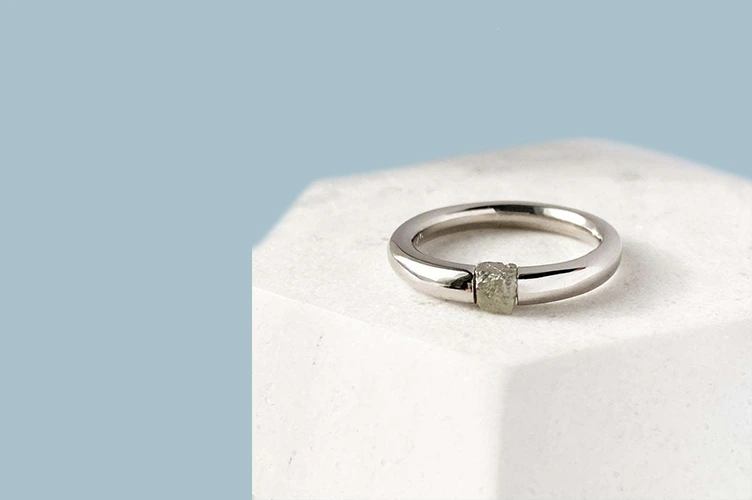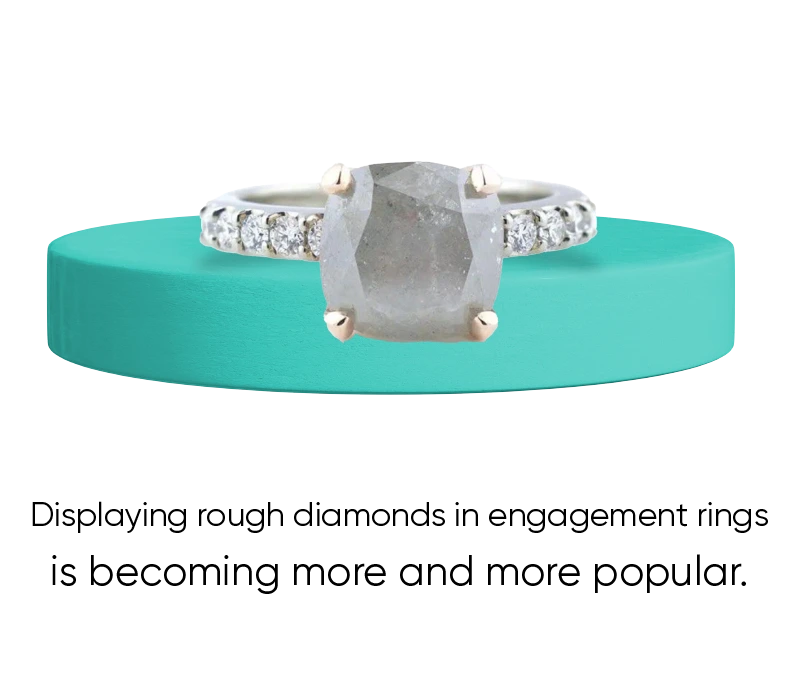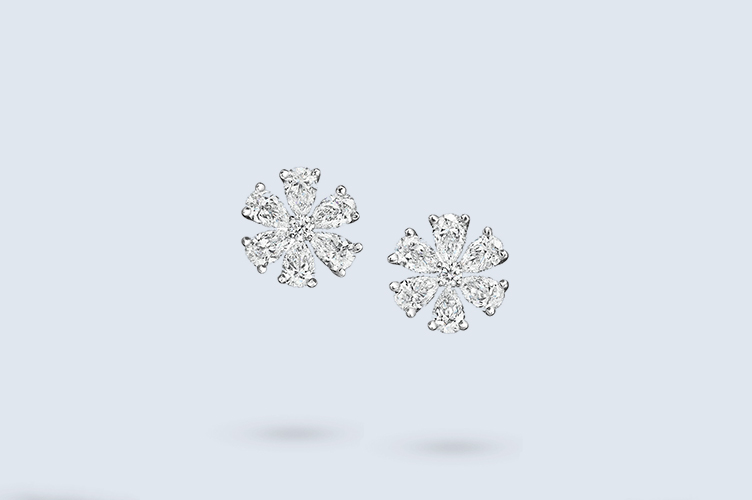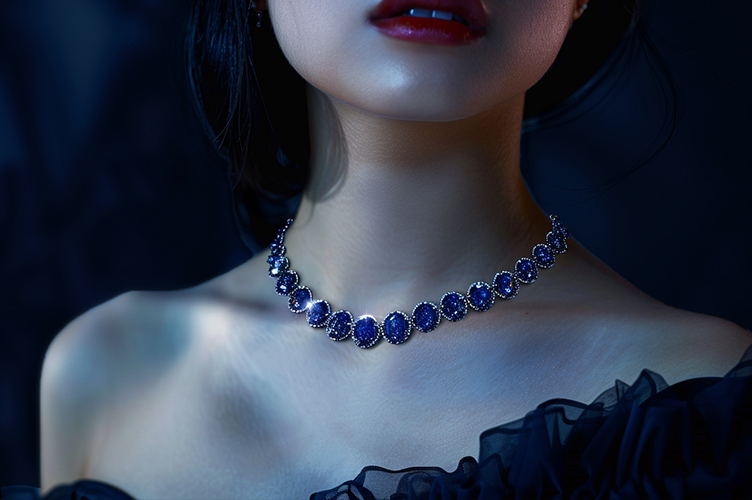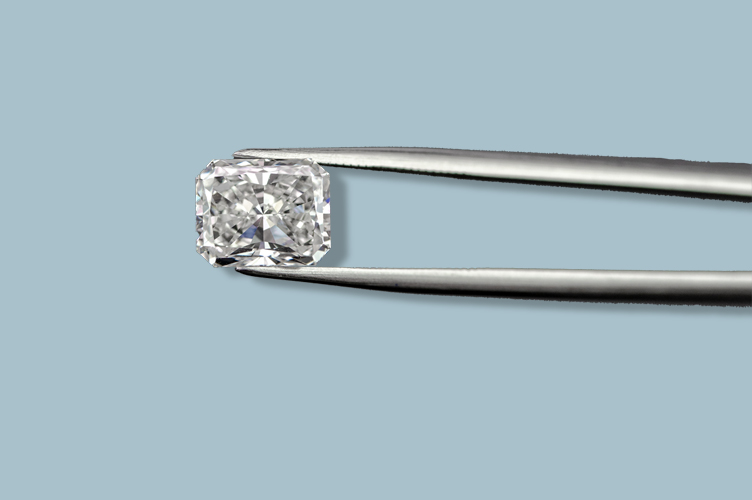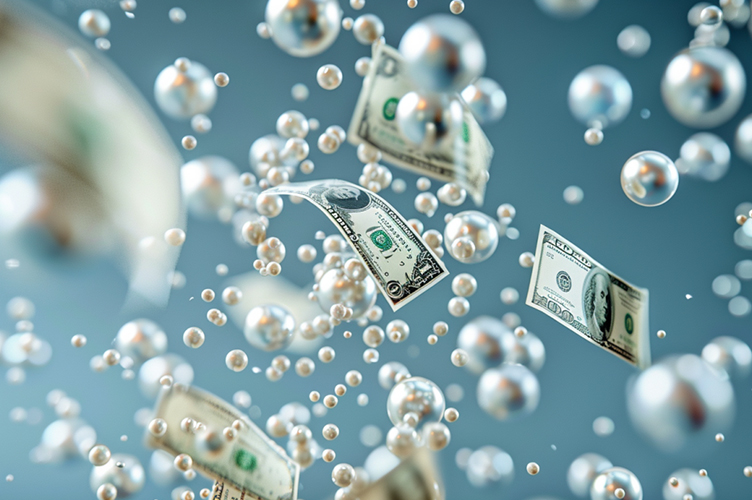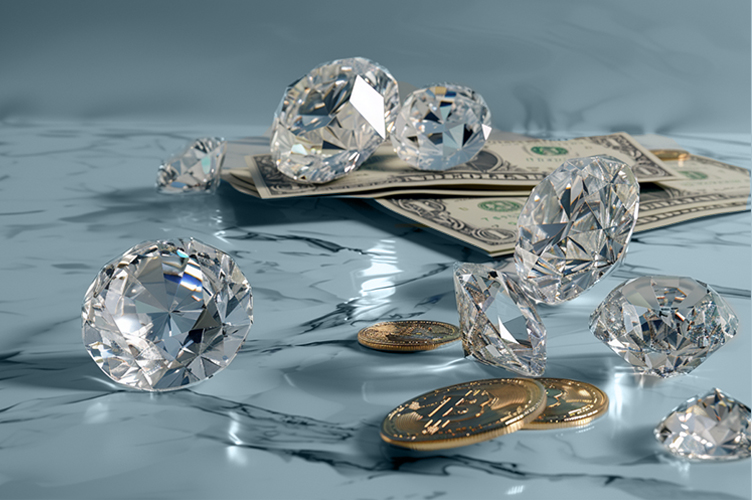Have you ever thought about a natural diamond‘s appearance before it’s cut and polished? When it comes to diamonds, understanding the different types is crucial in making an informed decision about an important purchase. Let’s explore the world of rough diamonds and shed light on the different types of rough diamonds. Gem quality diamonds and industrial diamonds. So, grab a cup of coffee, and let’s dive into the sparkling realm of these precious gems!
What You Will Learn
Gem Quality Diamonds
Most people imagine a dazzling, beautifully cut polished diamond sparkling on a ring or pendant when they think of diamonds. These gem quality diamonds are treasured for their exceptional clarity, color, and brilliance. Gem quality diamonds are cut and polished for use in jewelry, and they are graded based on the famous “Four Cs”: carat, cut, color, and clarity. Let’s break it down.
Carat: The carat weight measures a diamond’s size. When a diamond cutter cuts a diamond into its final shape, much of the original rough diamond is cut away. Larger diamonds are often associated with luxury and prestige, but remember that size is not the only diamond value indicator. It’s all about finding the right balance that suits your taste and budget.
Cut: The cut refers to how well a diamond has been shaped and faceted, influencing its brilliance and overall beauty. A raw diamond is polished away during the diamond cutting process to make these facets. The cut can be graded from excellent to poor, with perfect cuts maximizing light reflection and creating a breathtaking sparkle.
Color: Diamonds come in various colors, from icy white to fancy colors like yellow, blue, or pink. The Gemological Institute of America (GIA) grades diamond color on a scale from D (colorless diamonds) to Z (light yellow or brown). The less color a diamond has, the more valuable it tends to be.
Clarity: Natural diamonds often have inclusions, which are tiny internal flaws or external blemishes. These imperfections’ number, size, and visibility determine the overall clarity. A higher clarity grade indicates fewer imperfections and enhances the diamond’s value.
Navigating the Different Types of Diamond Clarity
Rough Diamond Engagement Rings
Sometimes, a diamond can break all these rules! Unlike traditional engagement rings featuring cut and polished diamonds, rough diamond rings showcase the raw and natural beauty of uncut diamonds. Displaying rough diamonds in engagement rings is becoming more and more popular. People love the natural, earthy look and the fact that each ring is unique.
Industrial Diamonds:
Now, let’s shift gears and talk about industrial diamonds. While not nearly as glamorous as gem quality diamonds, industrial diamonds play a crucial role due to their exceptional hardiness and durability. Here’s a glimpse into their world:
Synthetics: Industrial diamonds are often created through a synthetic process, where scientists replicate the conditions required for diamond formation. These synthetic diamonds are chemically and structurally identical to natural diamonds, making them ideal for industrial use.
Cutting and Polishing: Industrial diamonds are employed extensively in cutting, grinding, and polishing tools. You’ll find them in construction, mining, automotive, and aerospace to cut through hard materials like concrete, rocks, and metals.
Tech and Electronics: The remarkable thermal conductivity of diamonds makes them valuable for high-tech applications. They’re used in electronic devices like lasers, computer chips, and even in outer space to keep satellites cool.
Drill Bits and Saw Blades: Diamond crystal is essential in producing drill bits and saw blades for drilling and cutting through rigid materials. These raw diamonds are embedded in the tips or edges, ensuring prolonged usage and increased efficiency.
Now that you know about gem quality and industrial diamonds, you can confidently search for the perfect engagement ring. Remember, gem quality diamonds are meant to captivate with their beauty and sparkle. On the other hand, industrial diamonds are powerhouses of hardness and durability, serving various practical purposes in industries worldwide.
Do you need insurance for rough diamond engagement rings?
Whether your diamond is natural or polished, if you’ve bought a piece of diamond jewelry, insurance is vital. And thanks to BriteCo, keeping your diamonds protected is affordable and easy.
BriteCo offers affordable specialty jewelry insurance that covers up to 125% of your ring’s appraised value. Our policy covers loss, theft, damage, and mysterious disappearance.
Get an instant free quote for an affordable monthly or annual payment. Then you have to upload the required documentation, and you’ll be covered in minutes.
Also Check:
How much is a Blue Diamond Worth? | BriteCo Jewelry Insurance
How to Identify a Raw Diamond | BriteCo Jewelry Insurance
How Much is a Pink Diamond Worth?| BriteCo Jewelry Insurance



